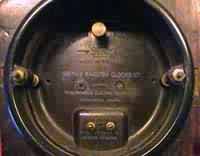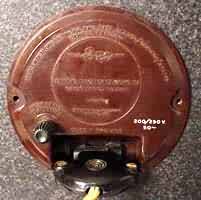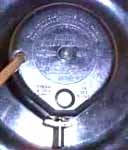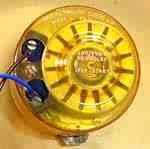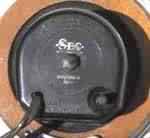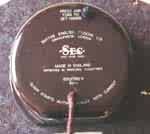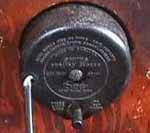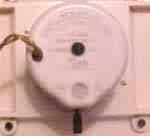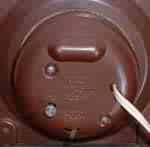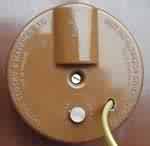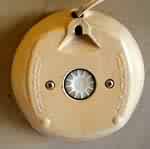Smiths movements¶
- Author:
Barrie Smith
Information about Smiths Clock Movements¶
Revised September 2006 BRS
SYNCHRONOUS MOVEMENTS
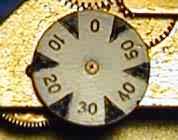 A telltale window is usually fitted and this was
always below the dial centre. It took the form of a disc partly visible
through an aperture in the dial which showed alternate black and white
sectors each representing 20 seconds (and sometimes so marked)
A telltale window is usually fitted and this was
always below the dial centre. It took the form of a disc partly visible
through an aperture in the dial which showed alternate black and white
sectors each representing 20 seconds (and sometimes so marked)
The De Luxe was produced in a variety of types, the main division being between heavy duty, for larger clocks including external clocks, and light duty for wall clocks and some mantel clocks. A self start version was made in 1934 (reviewed WCM Mar 34). One of the self start versions was in use until around 1955.
The case is the same size as the type 1 but is found with several minor variations.
Identification tips for the De Luxe:
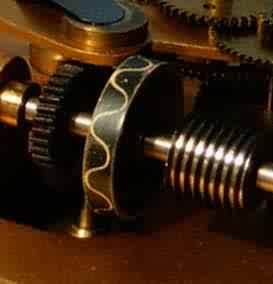 A tell tale window was often fitted. This was a small
aperture, usually above the dial centre in which could be seen a moving
wiggly line. The line was either a line painted on the rim of a wheel
attached to the worm gear arbor, or a specially shaped wheel with the
edge distorted to something resembling a sine wave shape. The wheel
rotates at right angles to the dial so the edge passes the window.
A tell tale window was often fitted. This was a small
aperture, usually above the dial centre in which could be seen a moving
wiggly line. The line was either a line painted on the rim of a wheel
attached to the worm gear arbor, or a specially shaped wheel with the
edge distorted to something resembling a sine wave shape. The wheel
rotates at right angles to the dial so the edge passes the window.
From the rear the two identification features are the combined handset and starting knob, in bakelite for this movement, which is situated close to the connector, and the connector itself, which is able to swivel a little for convenience in assembly.
The third type of movement, known as the Bijou, is smaller than the first two. There was a detailed descriptive article in the November issue of Watch and Clock Magazine in 1936.
It was produced in several styles shown below.
The Bijou was a very successful design and became the workhorse of Smiths electric clocks and remained in use until around the late 50s. It was reviewed in 1936 (WCM Nov 36) and was considered worthy of re-examination in 1956(HJ Apl 56).
It was so built that the time setting knob could be at the rear or at the bottom of the movement and though basically not self starting a variation was developed able to self start.
The non self starting units could have either a telltale or a seconds hand. The telltale was normally above the hand shafts unless the motor was mounted in an inverted position.
This was developed circa 1953, and was a version of a motor used in alarm clocks called the QA with the alarm mechanism omitted. It did not have a telltale window but a seconds hand was sometimes fitted.
Unlike other Sectric movements, the QAT uses an open rotor type movement embodying a non-magnetic rotor working in a magnetic field.
Note : HJ June 1953 has an article on intro of a new alarm movement, the “New Callboy” and Smiths “Repair guide” has a page on the new callboy which states that the QAT for wall and mantel clocks is basically same design as the new callboy but without the alarm mech.
This was introduced in 1957 Reference: article in HJ. and was intended as a replacement for the Bijou. One very noticeable feature is that the motor has plates of resin bonded fabric .
General comment about the use of current motor units in older models.
It seems likely that usually, though maybe not always, Smiths continued to fit the movement originally fitted to any particular model even after a later movement became available. Among other evidence of this, there is a picture of a mantel clock fitted with a type I movement which has a presentation plate attached dated 1938.


